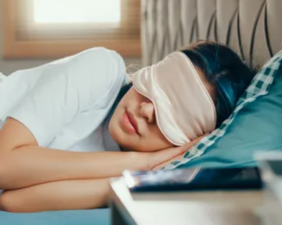Not only humans, but animals also dream.
Not only humans, but animals also dream.
Why do humans dream?
The current mainstream explanation is: during sleep, the brain's nervous system does not fully rest, it is a time period for memory consolidation, cognitive maintenance, emotional regulation, etc., an indicator of physiological function recovery, etc.
In fact, these explanations do not mention the root cause of dreaming.
Dreaming is a physiological function of the irrational consciousness of humans during sleep, but it is a daily self-examination of the brain and body by the lower center, while instantly reflecting the internal and external environment. This "maintaining the activity of the lower center of the nervous system" is the mainstream explanation of "the brain's nervous system does not fully rest." This physiological function is determined by DNA.

What exactly is a dream?
The study of dreams is also called dream studies. In the first few decades of the 20th century, dream studies were deeply influenced by Austrian psychologist Freud, who believed that "dreams are the satisfaction of wishes that cannot be realized and suppressed in reality." Although this view has been questioned, there is still no more reasonable view that can completely deny it.
Is dreaming for the purpose of storing memories?
Some people think. Dreaming is to consolidate memory, so they compare the brain to a computer: memories are stored in the brain just like data is written to a computer hard drive. However, such a metaphor is not accurate because it cannot explain the strange content of dreams - dreams are often incoherent because the scenes in dreams are always jumping; dreams are like hallucinations because there is a deviation between dreams and reality, containing unrealistic, distorted concepts and cognitions; dreams are narrative because dreams are fictional versions of real experiences, which are similar to reality but more bizarre than reality.
The role of this physiological function is to keep the lower center of the animal still sensitive during sleep. This "feeling" monitors the animal's physiological state and environmental stimuli at any time. For example, sleep paralysis, commonly known as ghost pressing on the bed, is a sleep disorder. It may be caused by temporary muscle paralysis due to nutritional imbalance, fatigue, psychological factors, etc. There are more female patients of this type, which may be related to female partiality, heavy housework, and heavy psychological burden. If temporary muscle paralysis continues to occur, the resulting cardiopulmonary dysfunction may cause people to "pass away". But usually, the narrator will struggle hard to recover from this state. In this recovery process, the "lower center activity" in the sleep state plays a decisive role. It is because the lower center maintains a certain level of activity that it plays a monitoring role when the body's physiological functions fail, thereby notifying the brain to present in the form of dreams. Therefore, many dreams are related to diseases. Also, because the brain maintains the activity of the lower center during sleep, it pays "irrational" attention to physiological functions and environmental stimuli and is in a vague state, so the environment chosen by animals at this time is usually safer.
Dreaming, humans are generally intoxicated by all the "clouds" about dreams and ignore the essence of dreams. Dreams are a physiological function of the body, which is determined by DNA. It is a physiological function that the lower center self-examines the brain and body every day during sleep and immediately reflects the internal and external environment.
